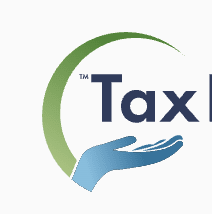
In this ultimate guide to stress-free tax filing, I’ll break down everything you need to know about paying your taxes, from understanding different types of income taxes to determining your tax obligations and exploring payment methods.
Whether you’re an employee or self-employed, this guide will help you tackle tax season with confidence and ease.
Everything You Need to Know About Taxes
Americans who work pay two types of income taxes: federal and state. The money collected from taxes is used to pay for government programs, including Social Security and Medicare, which are both primarily funded by payroll taxes.
Some states, like Florida and Texas, do not have state taxes. Residents of a state with no state income tax are still required to pay federal income tax.
If you are an employee, each paycheck you receive is the amount of income you earn after taxes have been taken out. These taxes go directly to the IRS. When you file your income taxes, you'll find out if you overpaid and will receive a refund. If, however, you've underpaid your taxes, you will owe the IRS that money.
If you are self-employed, you are required to pay quarterly estimated taxes. The same situation applies: When you file taxes, you may still owe money, or you may receive a refund. If you're unsure about how much you owe or need help managing your tax obligations, consulting with one of the best tax debt relief services can be beneficial.
Basic Tax Terms You Should Know
Gross income: The total amount of money you earn before taxes are taken out.
Net income: Your earnings after taxes and deductions have been considered.
Deductions: Expenses you can subtract from your gross income to reduce your taxable income. These include IRA contributions and health savings account contributions.
Credits: An amount you can subtract from the taxes due if you qualify, such as the Child and Dependent Care Credit.
Tax brackets: Income is divided into levels, and each tax bracket has a different income tax rate.
Marginal tax rate: The rate at which your last dollar of income is taxed.
How Do I Determine My Tax Obligations?
First, determine whether you need to file taxes. Most Americans or U.S. residents who work need to file. If your income is over the filing limit (which changes over time), or if you earned over $400 from self-employment, you will need to file your taxes.
Here are the filing requirement income limits as of 2024, based on filing status:
| Filing status | Filing requirement income |
|---|---|
| Single | $13,850 under 65; $15,700 if 65 or older |
| Head of household | $20,800 under 65; $22,650 if 65 or older |
| Married filing jointly | $27,700 (both spouses under 65) |
| Married filing separately | $5 |
Tax Forms You’ll Need to File
Whether you are an employee or self-employed will determine which tax forms you’ll use when filing.
If you’re an employee, you’ll need your W2 from your employer.
If you’re self-employed, you’ll need 1099-NEC (non-employee compensation) forms from any client you billed for $600 or more.
If you are required to file taxes, you can do so yourself with software like TurboTax, or you can hire a tax professional to file them for you. Either way, you’ll be notified of the amount you owe or the amount that the IRS will refund you when you file.
What Do I Need to Do to File My Taxes?
If you’re filing for the first time, here’s everything you’ll need to do.
Gather Your Documents
You’ll need to provide your Social Security number so the IRS can identify you and any tax forms like W2s or 1099s. If you run a business, you will also need financial documents like your profit and loss statement and an expense report that itemizes your business expenses, as they may be tax-deductible or otherwise reduce your taxable income. You may also need your previous year’s tax return to access your information if you’re using tax software.
Choose a Filing Method
If you’re comfortable using tax software, TurboTax and other programs offer software for employees and for self-employed individuals. You can opt to do your taxes yourself with the software fully, or you can upgrade your plan to have a tax advisor review your taxes or file them on your behalf.
If you prefer to work with a Certified Public Accountant, schedule an appointment far ahead of the tax-filing deadline, which is usually April 15 (if the 15th falls on the weekend, the filing deadline will be the following business day).
File Your Taxes
Whichever method you choose, you’ll need to provide details on any contributions you made in the tax year to a qualifying retirement plan, college savings fund, and/or health savings account. You’ll need to list any expenses for child care or college if you have dependents. If you own property, the interest you pay on your mortgage may be tax deductible, so you’ll need to provide documentation on how much you paid in interest for the tax year.
Business owners must provide a list of business expenses, as they may reduce taxable income.
Once you file your taxes, you will be presented with the amount you owe or will be refunded. If the IRS owes you money, you can expect the refund to be processed within 21 days if you file electronically and six to eight weeks if you file a paper return. Some tax services offer an instant tax refund, though this can be a fee.
How Can I Pay Tax Debt?
If you owe taxes, you’ll need to understand how to pay taxes online or via mail.
Determine What You Owe
Before you pay your tax debt, you need to know the exact amount you owe. When you file your taxes with the form 1040, Line 37 shows the amount you owe. Remember that this is the amount you owe when you file your taxes. You may have accrued interest or fees if you’ve delayed paying your tax debt.
You can find the most updated amount you owe on the IRS website, which we’ll cover next.
IRS Tools for Payments and Account Information
If you want to pay taxes online, the IRS has two systems you can use to pay your tax debt. The first is Direct Pay, which allows you to make payments directly from a checking or savings account. The second is the Electronic Federal Tax Payment System, which is run by the U.S. Department of Treasury.
There’s also the IRS2Go mobile app, which allows you to pay your taxes from your mobile device. For any of these three options, you may be asked for information on past tax returns to get set up. You can save your payment details for future use as well.
Payment Methods You Can Use to Pay Your Taxes
You can pay your taxes using a checking or savings account, as well as a debit or credit card. You can also set up a same-day wire transfer through your bank, though be aware your financial institution will charge a fee for the service.
If you prefer to send a physical payment, you can send a check or money order with your 1040-V statement, which has all the information the IRS needs to know which tax year and taxpayer to apply the payment to, as well as an address for where you can mail the payment.
You can also pay your taxes with cash through a retail partner that accepts payments on behalf of the IRS.
Where to Send Your Payment
If you want to send a check or money order, you can find the appropriate address to send your payment to on the IRS website. Each state has a different address. It’s also on the 1040-V statement that you should mail with your payment.
What to do If You Can’t Pay Your Tax Bill
The IRS does offer several options if you can’t pay your tax bill in full:
Installment Agreement
You may be able to set up a payment plan that allows you to pay a fixed amount each month until your tax bill is paid off. Remember that your balance will continue to accrue interest and possibly late fees until it is paid in full.
To qualify for a payment plan, you must owe $50,000 or less in taxes. You must have filed all required tax returns and demonstrate the ability to pay the proposed installment amount based on your income, expenses, and assets.
Offer in Compromise
If you cannot pay your tax debt, even by a payment plan, you may qualify for an offer in compromise, which will allow you to settle your tax debt for less than you owe. You can negotiate this offer for yourself or hire a tax relief service to help negotiate on your behalf. The latter will involve fees on top of what you end up owing the IRS.
To qualify, you must demonstrate that you cannot pay your debts and have completed tax returns for previous years. Note that there is a fee of $205 unless you qualify for low-income certification.
Currently Not Collectible Status
If you are not able to pay your basic living expenses and your tax bill, you — or a tax relief service — can request the IRS put you in Currently Not Collectible Status. This means that as long as you have this status, the IRS will not try to collect money or seize your assets to cover your tax debt. You will, however, still be responsible for interest and penalty fees.
What Do I Do After Paying My Taxes?
Now that you’ve mastered how to pay taxes, what happens next?
View Your Tax Return
Any time you want to view your tax records or payments, you can log into your account on the IRS website to see documents the IRS has sent you as well as your balance. You can set up a payment plan or make a one-time payment.
It’s also a good idea to save a copy of your tax return to your computer so you can easily access it if you need it.
Amend Your Tax Return
If you need to make changes to your filed tax return, you’ll need Form 1040-X. You may also need supporting documents that support the changes you want to make. Print and sign the forms and mail them to the address included on them.
Decide on What Tax Records to Keep
It’s a good idea to hang onto your tax return documents for two years from the date you paid the tax or three years from the date you originally filed — whichever is later. There are reasons to keep tax returns and other tax documents even longer, but they don't apply to most taxpayers.
It’s also smart to keep income, expense, and investment records, as well as documents for your business expenses if you have a business.
If you live abroad but pay USA tax and claim the Foreign Income Exclusion or Foreign Tax Credit, you may need to keep your tax records longer.
Can I File Taxes and Pay Later?
The short answer is yes. You can file your taxes and then pay what you owe later, but you’ll need to set up a payment plan or risk penalty fees. You'll be charged interest on the amount you owe until the full amount is paid off.
If your tax debt is more than you can pay right now, you may qualify for a short-term payment plan that gives you an additional 180 days to pay the balance in full. If financial circumstances prevent you from paying the amount entirely, you can apply for an offer in compromise to settle your tax debt for less than you owe.
Bottom Line: Pay or Plan Now to Avoid Paying More Later
Learning how to pay taxes isn’t complicated once you’re armed with knowledge. Know your options for how to pay, whether online or otherwise. If you can't pay your tax debt right away, contact the IRS to set up a payment plan or explore other options that'll keep you from owing much more later on.



